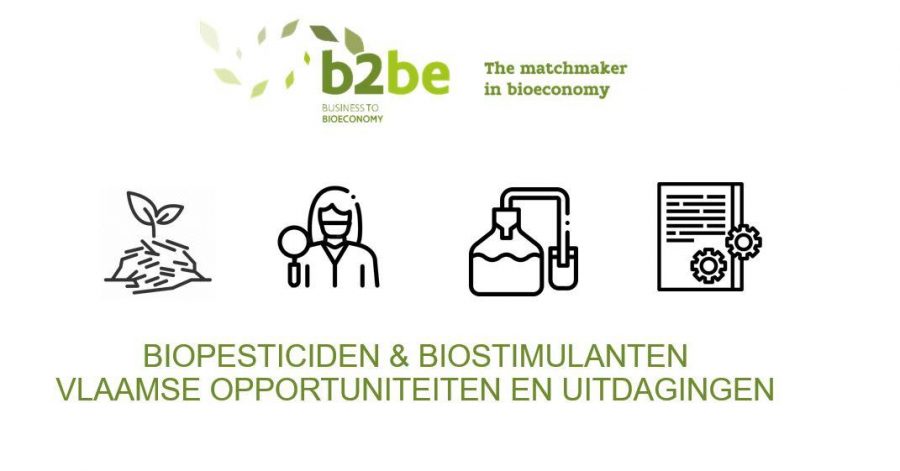Publication Biopesticides & Biostimulants: Opportunities and challenges for the Flemish bioeconomy

Circular economy is high on the policy agenda, both in Flanders, Belgium and in Europe. In 2015, the European Commission launched its Circular Economy Plan for the first time. This plan included 54 legislative and non-legislative initiatives to initiate the transition to a circular economy. The (re)use of biomass (residual) streams are an important cornerstone of this Circular Economy Plan: biomass (residual) flows are abundant, versatile and renewable. They can replace certain fossil raw materials. Flanders was already working on the valorization of biomass residual flows long before the launch of the Circular Economy Plan. Several initiatives in Flanders such as CINBIOS (2012-2013), Duurzaam beheer van biomassesteststromen (2015-2020), SYMBIOSE (2016) but also the Action Plan Food Waste and Biomass Waste Streams Circular (2021-2025) and the recent creation of the Business 2 Bioeconomy (B2BE) Facilitator show that Flanders has a pioneering role within Europe.
The recent recognition and regulation of biostimulants through the European fertilizer legislation (EU 2019/1009) was the first deliverable of the European Commission's Circular Economy Plan. Biostimulants are mainly made from biomass flows (seaweed and plant extracts, protein hydrolysates, chitin,...), but also biopesticides can be made from biomass (residual) streams (chitin, plant extracts).
Despite the various initiatives at the Flemish and European level, the various strategic roadmaps (EU Green Deal, the Farm to Fork Strategy) and existing legislative frameworks (EU 2019/1009, VLAREMA), the Flemish sector is experiencing significant growing pains in rolling out this Circular Economy Plan: the production, scaling up and commercialization of biostimulants and biopesticides derived from biomass (residual) flows are experiencing significant barriers. The report below provides a non-exhaustive overview of the barriers and opportunities in the Flemish landscape for the conversion of biomass (residual) streams into biostimulants and biopesticides.
Discover the full market study (in Dutch)
Biopesticiden & BiosStimulanten: Opportuniteiten en uitdagingen voor de Vlaamse Bio-economie